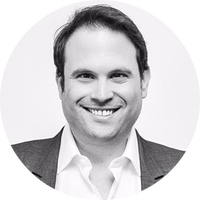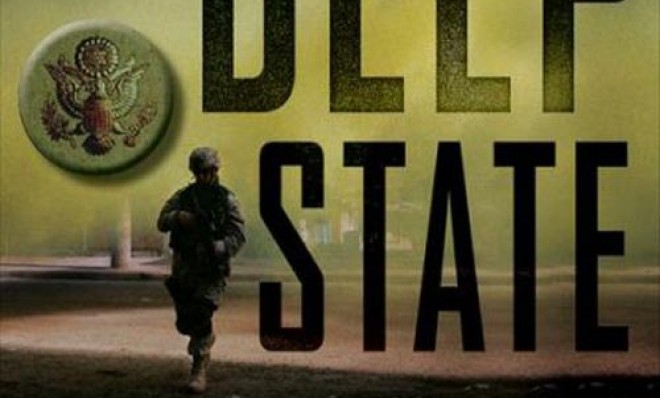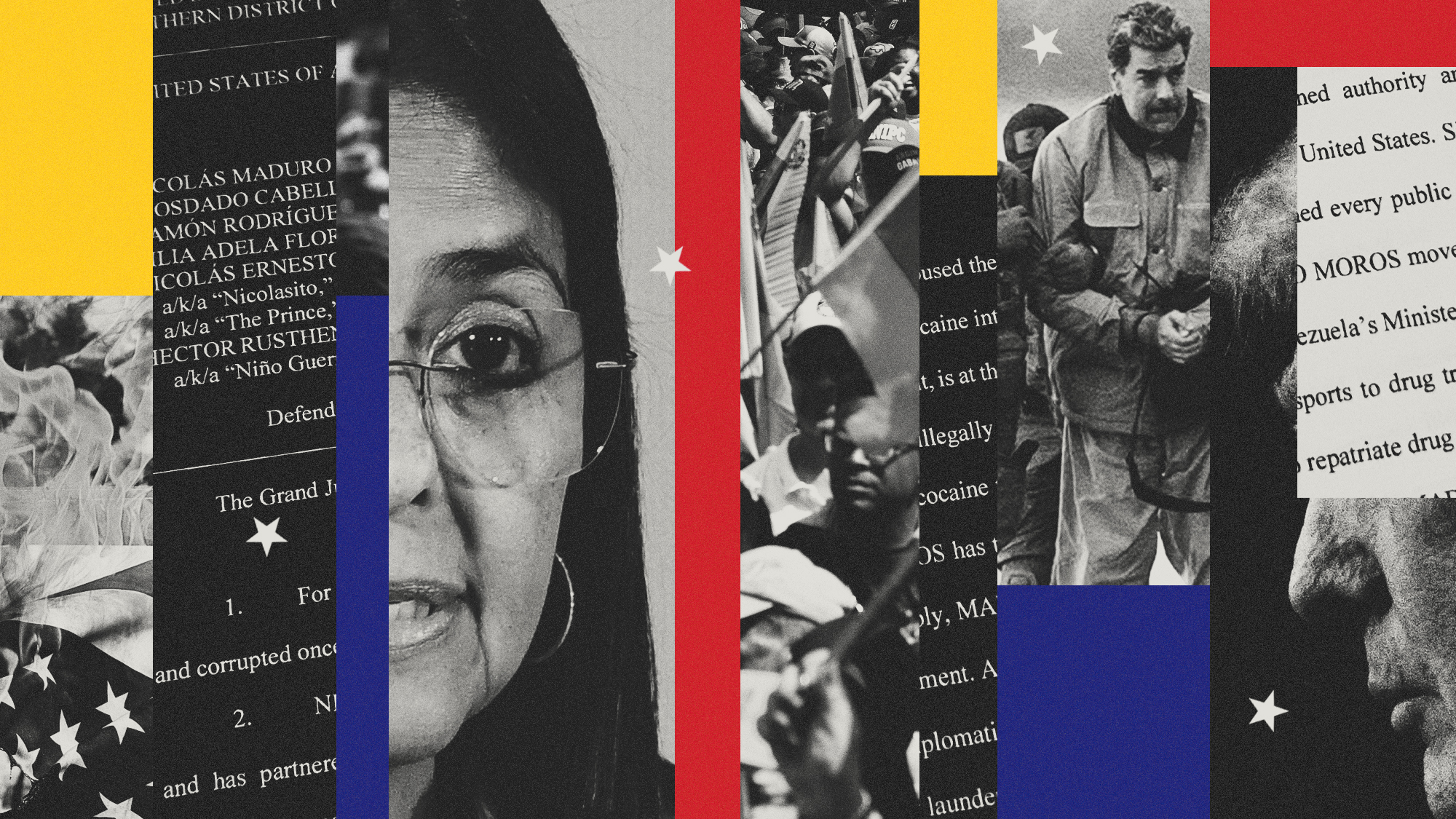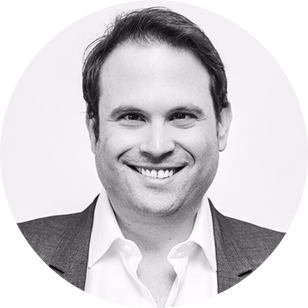Deep State excerpt: The NSA is the largest factory of secrets in the world
For 60 years, the NSA has turned whispers into shouts. It is the anchor of the deep state


This is an excerpt from Deep State: Inside the Government Secrecy Industry, by Marc Ambinder and D.B. Grady. Over the next few weeks, we'll be running a series of NSA-related excerpts from the book here on The Compass.
**
In the early part of 2000, the National Security Agency was "up" on a known al-Qaeda safe house in Yemen. It had intercepted cell phone calls between a known terrorist and persons unknown in San Diego. Because the conversations were not themselves evidence of terrorist plots, and because the identities and locations of the persons inside the United States were not known, the NSA did not have the probable cause necessary to seek a Foreign Intelligence Surveillance Act (FISA) warrant. (Had the other numbers been known, the FBI could easily have figured out who these guys were. But the collection platform in Yemen was acoustic and not electronic; the NSA had no data about the target cell number.)
The Week
Escape your echo chamber. Get the facts behind the news, plus analysis from multiple perspectives.

Sign up for The Week's Free Newsletters
From our morning news briefing to a weekly Good News Newsletter, get the best of The Week delivered directly to your inbox.
From our morning news briefing to a weekly Good News Newsletter, get the best of The Week delivered directly to your inbox.
Then came September 11, 2001.
The calls in question went to two of the airliner hijackers living in San Diego.
As Lieutenant General Michael Hayden, director of the NSA, would explain to President George W. Bush and his cabinet, it was unconscionable that he lacked the authority to ask a telecom for the transactional records associated with the numbers in question. He could have connected the dots, but FISA was being interpreted in such a way that kept his hands tied. As a practical matter, telecoms were all but off-limits, and time was of the essence.
In the aftermath of 9/11, Hayden and other American officials believed, with good reason, that further attacks were planned. Hayden could help find those missing dots — the U.S.-based ends of telephone conversations emanating from Yemen, Afghanistan, and Somalia — but he would need to do things he hadn't done before. Things that didn't necessarily track with FISA. He would need to be able to proactively monitor the outgoing calls of people inside the United States — possibly even citizens — who regularly made foreign calls to "dirty numbers" or confirmed terrorist targets.
A free daily email with the biggest news stories of the day – and the best features from TheWeek.com
He needed transactional records from the telecoms so that he could immediately identify who was on the other end of the telephone call or who was the recipient of an email. Noting that the two San Diego terrorists changed their cell numbers frequently and regularly opened new email accounts, Hayden needed access to credit records and bills that would tie one person to a series of communications transactions. And he needed to be able to see the calling circles of those called by the U.S-based persons. He needed a way to know, instantly, when one of those persons received or made a call associated with terrorism to a number outside the United States or to an email associated with jihadists. And he needed to find a way to do all of this without intercepting the telephone and web traffic of innocent Americans.
Hayden would get what he needed. (It helped that Vice President Dick Cheney, his chief of staff David Addington, and William Haynes, the Pentagon's top lawyer, had already identified the NSA's collection problems as a major obstacle to find extant Al Qaeda cells inside the United States.) But as Hayden later described it, the President's Surveillance Program was simply a gap-filler, albeit a crucial one that would allow the government to thwart terrorists before they could act.
***
The NSA is the largest factory of secrets in the world. Instead of giant brick chimneys billowing out smoke, the NSA works from a colossal mirrored-glass building at Fort Meade, Maryland, where it collects the world's digital detritus, refines it into a digestible product, and sends it to policymakers for consumption. For sixty years, the NSA has turned whispers into shouts. It is the anchor of the deep state.
What older Americans know about the NSA was gathered from a different era in American espionage, when the intelligence community was more pliant to the oftentimes nefarious whims of politicians. The NSA followed directives to spy on U.S. citizens. Younger Americans, on the other hand, often view the agency through a cinematic lens. At the NSA, they called it the "Enemy of the State problem" — a reference to the 1998 movie portraying the agency as an amoral panopticon able to follow anyone anywhere. (Not a few NSA managers at the time saw the movie and privately thought, "If only!")
For many years, it did not matter how the NSA was portrayed in the media. Congress willingly funded its ambitious projects and asked few questions. Then came the end of the Cold War and an era of relative peace. The president no longer depended on intelligence collected by the NSA. Furthermore, the way signals traversed the earth changed as telecommunications shifted from satellites to fiber and the global communications infrastructure exploded in size.
At the dawn of the millennium and the height of the dot-com boom, the NSA faced a budget crunch; its technological capabilities could no longer keep pace, and its mission seemed less relevant. Policy entrepreneurs in Congress, to include then representative Porter Goss, a former CIA case officer who would later serve as director of central intelligence, wanted to siphon money from the NSA for their own pet intelligence projects. In a private meeting before Hayden was sworn in, he told the incoming director that the NSA had a "reputation problem."
When Hayden, a bracing and admired U.S. Air Force general, became the NSA's director in 1999, he tried to show some leg. Greater openness, he suspected, would lessen anxiety about the agency and maybe even generate positive publicity, which would feed back into Congress' perception of the NSA. With his general counsel, Robert Deitz, he set up SIGINT 101 — a class for reporters who covered the agency, which included trips to NSA labs and even a brief chance to put on the headphones and hear what an intercept sounded like. General Hayden cooperated with author James Bamford — who theretofore had written the only contemporary history of the NSA — on a second book. He made himself accessible to reporters, hosting dinners at his home. He even joked about the agency's alleged prowess. "Despite what you've seen on television," he told college students in 2000, "our agency doesn't do alien autopsies, track the location of your automobile by satellite, nor do we have a squad of assassins."
The agency — once the closest held secret in the United States, if not the world — even established an official children's website called CryptoKids, for "America's future codemakers and codebreakers." Hayden knew how to work the system. Like J. Edgar Hoover and Walter Bedell Smith a generation removed, he recognized that it really did matter what the newspapers printed about secret agencies, and he was determined to put the NSA on solid footing. His strategy worked, something for which even his fiercest detractors give him credit.
Politically, Hayden had no doctrine but Goldwater-Nichols: the civilians proposed and he disposed. He followed the law and followed orders. That may be why he had no problem with secrecy — even the "weird secrecy," in the words of David Kris, former associate deputy attorney general for national security issues. Part of that weird secrecy included what would become known as the Terrorist Surveillance Program (TSP), one of the larger sets of secret surveillance activities authorized by President Bush in the weeks following the September 11, 2001, attacks. (We will refer to these activities as the "special programs" to distinguish them from regular NSA signals intelligence collection and analysis.)
After 9/11, in an effort to build a virtual fence around the country, the NSA deliberately began collecting certain types of data generated by U.S. citizens and tapping directly into the vein of communications that originated in the United States. It did so with the tacit, uneasy, and provisional approval of Congress — or rather, of the small fraction of congressional leaders given early briefings about it. Members of the judiciary were also involved; the two Foreign Intelligence Surveillance Court (FISC) chief judges who were "read in" to the program also did not object.
After it was partially exposed by the New York Times in 2005, a consistent number of polls suggest a majority of Americans believe that the program — to the extent that they know about it — was right. In keeping with the implicit bargain, Americans give their presidents wide latitude to do secret things so long as their security is enhanced and their blood is not shed. So maybe we shouldn't talk about it all. Where's the right to keep digging?
For one thing, an accurate accounting of the special programs — extraordinary extensions of executive power, and something that Hayden described to Congress during their initial briefing as "very, very different" from what the NSA had been doing before — has never been published in an unclassified format, so far as we can tell. But plenty of current and former government officials — in congressional testimony, in official reports, and in published and broadcast interviews — have described parts of the program that technically remain a secret. The information is already out there, and a jumble of data points exist for anyone with a bit of time to put together. It's not that hard to simply (and correctly) guess what the special programs were (when they were first authorized by President Bush), and what they are now (formalized under FISA). Confusion and mythology may have helped the government keep its secret, but they have not helped the NSA repair the damage its reputation sustained in the breathless aftermath of the New York Times piece.
Though Americans cede great authority to the president during wartime, they become more skeptical of that authority as the war recedes from view. Accepting the general premise that the president ought to be allowed to listen to conversations between one person in the United States and one person overseas where one party has a probable connection to terrorism is one thing. Accepting that a computer is sifting through an ocean of phone records to try and connect dots — and, oh, your phone records might be in that data set — is another. Accepting that the laws permitting this were interpreted and reinterpreted in secret (and for the most part still are) is even harder. As the fine teeth of the NSA's combs move closer to your data — the telephone numbers you dial, the email addresses you use — the more nervous you are, especially if you don't know what the NSA is doing with them. In the future, Americans will be asked to allow the NSA to sift through the internet traffic they generate solely to detect and mitigate the threat of massive cyber attacks.
The NSA's collection activities increasingly overlap with the digital detritus that Americans generate. For that reason alone it is worth the effort to put together an accurate account of what the agency does when no one is looking. The NSA has a story to tell and an argument to make. So do critics of its role. In the case of the special programs, excessive secrecy has contributed to several fundamental misunderstandings that undermine any debate about what the NSA's role ought to be.
Secrecy allowed the special programs to exist when they were absolutely crucial — in the days after September 11, 2001, when the government had lots of information but was legally restricted from assembling the toolkit to deduce if even greater terrorist attacks were forthcoming. At the same time, the type of secrecy bolted around these programs — exceeding even the extremely high level of secrecy that accompanies regular NSA activities — undermined the special program's efficacy and legitimacy. At various junctures, the motivation to keep the program so secretive provided the main justification for decisions about how best to modify it, and even which laws would serve as its basis.
Suspicion about NSA motives and operations may be an inevitable historical fact given its range and scope. But fallout from the controversy over warrantless wiretapping has drifted into the NSA's other missions as well. The "puzzle palace" is responsible for information assurance (which basically means it protects the Defense Department from cyber threats), and it creates and breaks codes. These tasks remain more difficult today because of, again, a legal system on a heightened state of alert against the NSA, so to speak, and a Congress less likely to write checks without certain assurances.
Next: Why the NSA keeps everything so secret
Marc Ambinder is TheWeek.com's editor-at-large. He is the author, with D.B. Grady, of The Command and Deep State: Inside the Government Secrecy Industry. Marc is also a contributing editor for The Atlantic and GQ. Formerly, he served as White House correspondent for National Journal, chief political consultant for CBS News, and politics editor at The Atlantic. Marc is a 2001 graduate of Harvard. He is married to Michael Park, a corporate strategy consultant, and lives in Los Angeles.
-
 Venezuela’s Trump-shaped power vacuum
Venezuela’s Trump-shaped power vacuumIN THE SPOTLIGHT The American abduction of Venezuelan President Nicolás Maduro has thrust South America’s biggest oil-producing state into uncharted geopolitical waters
-
 Most data centers are being built in the wrong climate
Most data centers are being built in the wrong climateThe explainer Data centers require substantial water and energy. But certain locations are more strained than others, mainly due to rising temperatures.
-
 ‘Maps are the ideal metaphor for our models of what the world might be’
‘Maps are the ideal metaphor for our models of what the world might be’Instant Opinion Opinion, comment and editorials of the day
